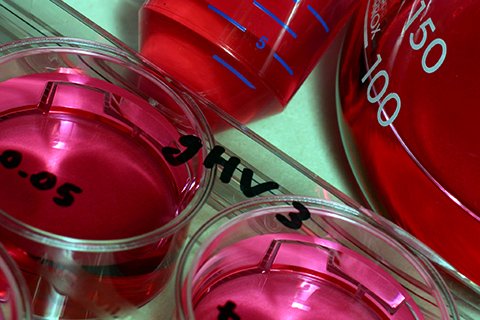Replacement parts

CSE researchers work to restore structure and function of damaged tissues and organs
Written by Greg Breining
If the promise of regenerative medicine is ever fully realized, it will rank right up there with the fountain of youth.
Regenerative medicine is a new and potentially transformational field of medicine that seeks to harness the body’s ability to heal itself, enabling its own cell-building processes to replace, restore, or regenerate dead, damaged, or diseased tissues and return patients to normal health.
“The idea is to harness the natural reparative abilities of the body to restore or maybe even replace a lost tissue function,” said Robert Tranquillo, a Distinguished McKnight University professor and head of the Department of Biomedical Engineering.
The result, scientists hope, are cures for diseases and injuries that now defy treatment.
Regenerative medicine might take several forms, Tranquillo said. It might involve harvesting and manipulating a patient’s own cells and reintroducing them to the patient. Or transplanting cells from a healthy donor. Or injecting chemical cues such as proteins to induce the body to repair damaged tissues. Or—something Tranquillo is working on—implanting a collagen “scaffold” grown in the lab from a donor’s cells that will be transformed by the patient’s own cells into living, growing tissue.
Medical researchers imagine all kinds of benefits, Tranquillo said—healing torn ligaments and tissues, reversing arthritis, restoring lost vision, repairing the damage of Type I diabetes, and curing cancer.
“The holy grail for this would be if we could create a replacement piece of beating heart for patients who have had infarcts or heart attacks. If one could engineer a piece of beating tissue that actually had the ability to be vascularized or carry blood flow to nourish all those beating cells—that would have a huge impact,” said Tranquillo, whose specialty is cardiovascular tissues.
Scientists even contemplate creating organs for transplant or stimulating the body to replace organs as needed. “The sky’s the limit in some sense,” Tranquillo said. “That’s why we’re doing research. No one knows exactly what can work and what will work. But there are a large number of investigators who are working now on all of those things I mentioned and many more.”
Two years ago Minnesota upped its commitment to research when the Legislature created Regenerative Medicine Minnesota and allocated more than $4 million a year to research, education, patient care, and other initiatives. “It’s really going to have a big impact—it already has,” Tranquillo said.
State leaders plan to leverage Minnesota's biotech expertise to grab a part of the quickly expanding global regenerative medicine market, which is expected to grow by more than 20 percent to $50 billion by 2020.
Grants are funding research at the University and Mayo Clinic on engineered blood vessels lined with stem cells derived from the patient to prevent blood clotting (Tranquillo’s project), regeneration of cartilage to repair arthritic joins, retinal cell replacement to reverse macular degeneration, and many other projects.
“I’d like to underscore just how comprehensive the University of Minnesota is in doing this research,” Tranquillo said. “There’s an extensive infrastructure and expertise base right here, which makes Minnesota special for this kind of research.”
Read how three faculty in the College of Science and Engineering are pioneering regenerative medicine.
- Robert Tranquillo: Living Valves for Growing Hearts
- Michael McAlpine: Channeling New Nerve Growth
- Samira Azarin: Building a Cancer Cell Collector
